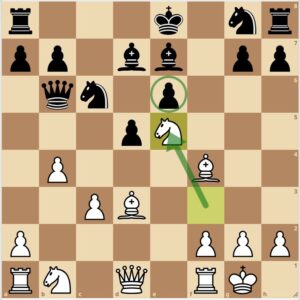Have you ever sat down for a game of chess, and in the midst of a strategic battle, found a situation where your opponent’s pieces prevent your pawns or other pieces from advancing? This tactical maneuver has a name and a history in the chess world.
A blockade in chess refers to the strategic positioning of a piece, typically a knight or bishop, in front of an opponent’s pawn to prevent its advance. By creating a blockade, a player restricts the mobility of the opponent’s pawn, consequently limiting their options and stifling their game plan.

In this article, we’ll dive deeper into the concept of a blockade, its significance, the optimal ways to establish and break it, and finally, we’ll look at some famous examples from chess history and the major types of blockades seen in games.
Importance of Blockade
The essence of a blockade in chess is more than just putting a stop to the pawn’s progress. It’s about controlling key squares and using that positional advantage to dictate the game’s rhythm. Here are the some of the importance of blockade:
- Control of key squares: By blocking an opponent’s pawn, you gain control over critical squares which can further be used for launching attacks or defending key areas.
- Limiting opponent’s activity: A well-established blockade can cripple your opponent’s game plan and reduce their piece activity.
- Preparation for pawn breaks: Before launching a pawn break, establishing a blockade can help in accumulating your pieces in the right positions.
Major Blockades in Chess
There are several forms of blockades in chess, each with its unique characteristics:
- Minor Piece Blockade: This is where knights or bishops are used to blockade an opponent’s pawn. The knight, with its ability to jump over other pieces, is particularly effective at this.
- Major Piece Blockade: Rooks and queens can also be used to blockade, especially in open files or ranks, preventing the advancement of enemy pawns.
- Pawn Chain Blockade: A pawn chain is a series of pawns of the same color, diagonally connected. A blockade can be set up against the base or head of such a chain, effectively neutralizing its potential.
- Positional Blockade: Here, the entire position is set up to restrict the mobility of certain key enemy pieces, not just pawns. It’s a more holistic approach to the game.
Establishing and Breaking a Blockade
Creating a successful blockade isn’t just about stopping a pawn. It’s about using your pieces effectively so that they also contribute to other areas of the board. Knights are particularly adept at blockading, as they can jump over other pieces and still exert control over various squares. Bishops, while not as versatile as knights, can also be effective, especially when they control long diagonals.
Breaking a blockade requires patience and strategic foresight. The blockading piece must be attacked and forced to move or exchanged favorably. Another strategy involves diverting the opponent’s attention to another part of the board, which can sometimes lead to the relaxation of the blockade.
Famous Blockades in Chess History
Historically, several games showcase the power and significance of blockading in chess. Legendary players like Nimzowitsch and Capablanca have used this technique masterfully. One notable game is Nimzowitsch vs. Salwe, 1911, where Nimzowitsch’s blockade completely paralyzed his opponent’s position.
Another famous example is Capablanca vs. Tartakower in 1924. Capablanca’s profound understanding of the blockade rendered Tartakower’s position completely passive, ultimately leading to a win for the Cuban maestro.
Conclusion
Understanding blockades in chess is crucial for anyone looking to improve their game. Recognizing the different types of blockades allows players to implement them strategically or counteract them when on the defensive. It’s evident from historical examples how powerful and game-deciding a well-established blockade can be.
